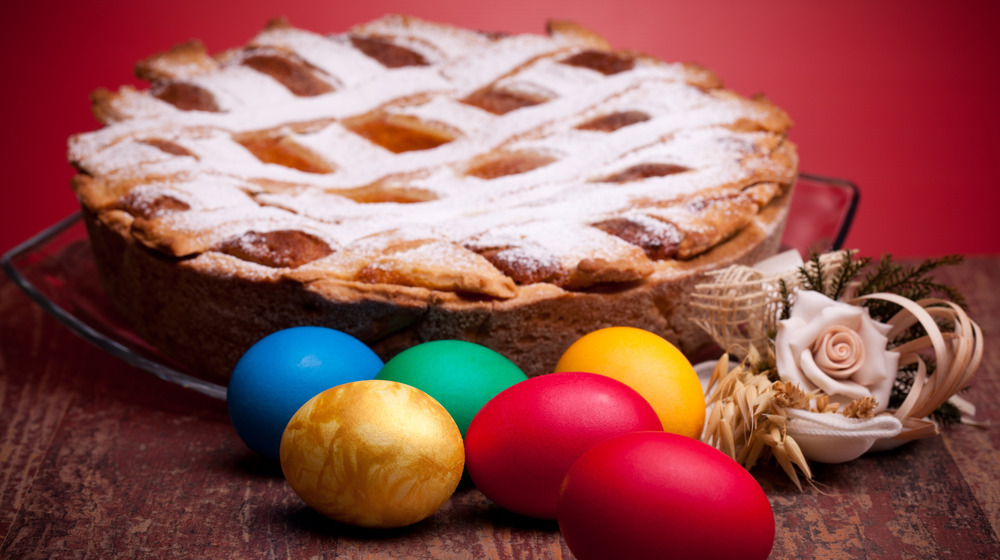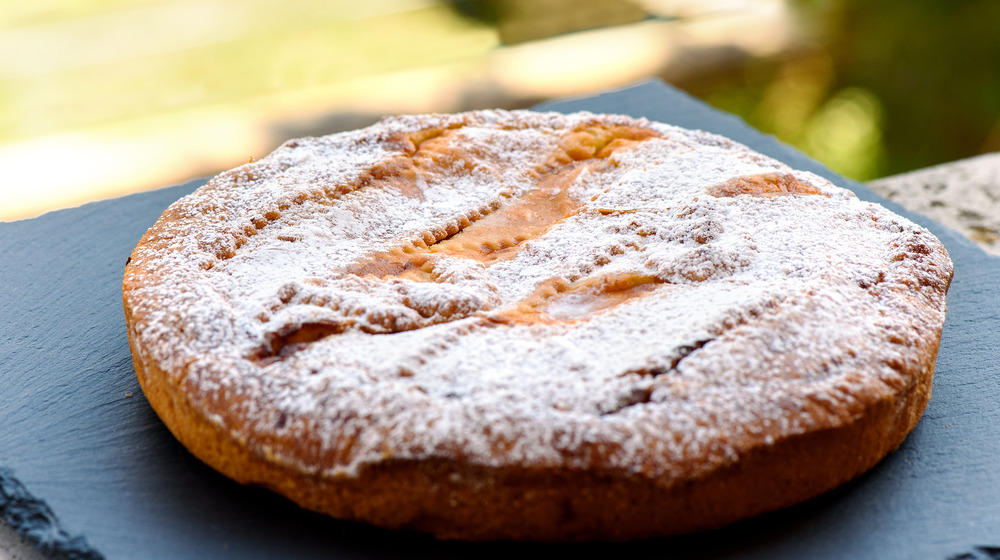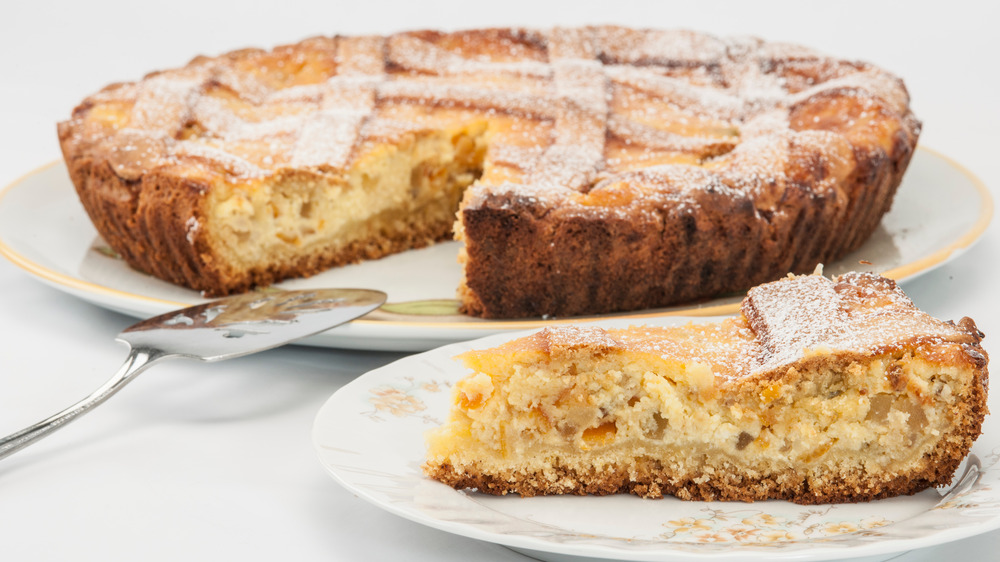What Is Pastiera Di Grano And When Do You Eat It?
Pastiera di grano — also known as Pastiera Napoletana, grain pie, and wheat pie — is a traditional Neapolitan dessert that is customary to serve on Easter. The dense, creamy, and rich classic is the absolute perfect final note during the holiday dinner. The pie sounds somewhat like a mix between bread pudding, rice pudding, and cheesecake. The filling is a rich custard containing ricotta, and the crust, called pasta frolla, is flaky and buttery and made with lots of butter and egg yolk (via Judy's Culinaria and Food52). Delicious!
Pastiera di grano is often studded with candied citrus, and redolent with orange and vanilla. Many current variations use wheatberries, which are similar to farro and have a nutty, toothsome essence that lends a unique texture to this pie. It offers a slightly chewy bite due to the grain or wheatberries that are ensconced within the ricotta and optional pastry cream.
Making pastiera di grano is a rather involved process. You could need two weeks just to soak the wheat, according to The Spruce Eats! An alternative method that involves switch out the water regularly, should take 2-3 days. And if you purchase pre-soaked and pre-cooked wheat berries, or "grano cotto," you won't even have to worry about that. Grano cotto comes in cans or jars that are sold especially to make this pie.
What is the cooking process?
Like so many classic dishes, there are many variations of the classic pie that differ from family to family. Some use wheatberries, some use rice, one person in a comment section said they use farro (via Food52). Some have candied fruit and some don't. Some use different pie crusts or shells. Some incorporate pastry cream in addition to ricotta. Traditionally, you begin cooking the wheat on Maundy Thursday. You prepare the pastry and filling on Good Friday and bake the dish itself on Saturday. Then you serve it on Easter Sunday (and enjoy leftovers on Easter Monday!).
Nonna Box also states that there are many legends behind the history of this iconic dessert. One speaks about the wives of fishermen who "left baskets with ricotta, candied fruit, wheat, eggs, and orange flowers as offering to the sea" to ensure their husbands would return safely. Another theory says that the "siren Partenope ... emerged from the waters of the Gulf lying between Posillipo and Mount Vesuvius to greet the locals" each spring, and she would be given particular gifts to celebrate her welcome. You guessed it: wheat, ricotta, eggs, orange blossoms, etc.
What do the ingredients symbolize?
Obviously, the dish is very symbolic and traditional, and each ingredient has a deeper meaning. Martha Stewart notes that the wheatberries "symbolize rebirth and renewal," which – of course – is especially resonant on Easter (or "Pasqua"). Nonna Box notes that "the sweetened ricotta ... is considered by many to represent the transfiguration of votive offerings of milk and honey that the catechumens received during the baptism, on Easter night."
The soaked wheat symbolized the "fusion of the animal and vegetable kingdoms" and is a sign of wealth, while the eggs "represent nascent life and fertility." Lastly, orange blossoms symbolize the "blossoming of nature." Judy's Culinaria also notes that "the grain begins from seed, symbolic of fertility and the spring season of rebirth and of Christ's gift of new life, after death and resurrection."
No matter which variation you make OR what you call it — the pastiera di grano is sure to be delicious. Buona Pasqua!


